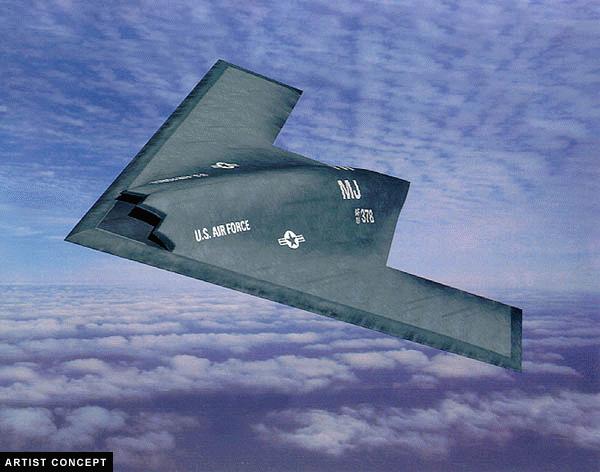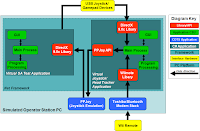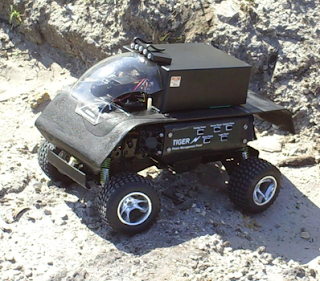After the completion of my initial investigation into the effects of dynamic visual interaction on Situational Awareness (SA) for stationary egocentric environments, I determined that additional research would be required. My investigation was limited to a stationary position, such as in a taxiway hold, which is not all inclusive of unmanned aircraft operations. To determine if the effect continues for all aspects of operation, dynamic positioning (i.e., taxiing, takeoff, landing, flight, target engagement, etc...) would require examination using the same methods.
Who should followup research be performed?
Pilots/operators have identified multiple problems (preferences and performance issues) with use of current GCS designs:
• control interfaces of unmanned aircraft are significantly different from manned
aircraft (lack of familiarity).
• exhibited desire for control systems that mirror an F-16 or F-15, which allow the
deployment of a weapon with a single switch as opposed to multiple mouse clicks
associated with drop down menus
• describe existing designs as employing “arcane and exhausting pilot-machine interface”
Researchers have identified issues requiring a redesign of existing GCS designs:
• current designs employ obsolete technology/poor design in equipment (prevents providing of optimal support)
• existing interfaces create limitations for flight and combat operations
• the USAF has received a recommendation to evaluate and optimize the human system
interface of unmanned aircraft Ground Control Stations
• variation between existing GCSs also represents a human factors concern requiring examination to generate regulation for domestic operations
• identified the need for the research originated from a necessity to reduce constraints of human operators and the contemporary technology used in the system
Benefits of performing followup research
The use of currently captured research data in conjunction with appropriate follow-on
research would facilitate the following:
• create opportunities to redesign/upgrade existing GCSs
• develop next-generation GCS using latest generation communication, display, avionics, and simulation technology
• develop new GCS design standard/provide input towards the creation of a standard
• expand the market for further application of embedded training (in actual GCS)
• create opportunities for partnerships in unmanned development (sensor developers, system integrators, academia, government agencies, etc…)
Phased research approach
Based on observation and analysis of the recent research data, it is clear there is a need for further follow-up research to examine the effect a dynamic eyepoint would have on operator SA in a dynamic environment (i.e., taxiing, takeoff, waypoint following, terrain following, target identification/engagement, enemy fire avoidance, and landing) while subject to attentional allocation. A definitive understanding of unmanned SA could be accomplished through a multiple phase research approach:
Phase 1 – Stationary Location (recently completed dissertation work) – Identified that there was a relationship between increased SA and dynamic eyepoint using unskilled participants
Phase 2 -Dynamic Location– Determine if any correlations identified in Phase 1 research still holds
true for dynamic movement (i.e., takeoff, landing, flight, etc…) using unskilled operators
Phase 3 –Piloted Operation– Determine if any prior correlations still remain true for a trained operator while under attentional load associated with typical operation.
Phase n –Further Resolution – Perform any necessary finer resolution research
Proposed Activities Durations
The following represents the proposed activities for the proposed research:
Phase 1 (COMPLETE) – Initial investigation into use of dynamic eyepoint versus static for stationary position
Phase 2 (dynamic location) - approx 12 month duration
• develop test system (custom software and integration)
• develop and test framework (SAGAT queries, simulated database environment)
• perform experimental testing activities (unskilled participants)
• develop technical whitepaper(s) detailing findings
Phase 3 (piloted operation) – approx 12 month duration
• update test system (incorporation of simulated pilot duties/responsibilities)
• update of test framework (SAGAT queries, simulated database environment)
• perform experimental testing activities (skilled participants)
• develop technical whitepaper(s) detailing findings
Phase n (further resolution) – as needed
Implementation
Follow-up research activities could be carried out at a minimum equipment cost through use of low-cost COTS equipment:
• PC Image Generator (PCIG)
• PCIG Software (runtime and ATP applications)
• PCIG Database(s)
• Windows XP/7 PC
• Head tracker
• Hands-on-throttle-and stick (HOTAS) joystick
• USB gamepad/button interface
Advanced Technology Demonstration System
After the follow-on research is performed, the captured data could be used to develop an advanced technology demonstration system:

• incorporation of new visual interaction techniques (if data shows correlation)
• incorporation of simulation technology (augmented reality-image generation, aural reproduction, tactile reproduction, high-fidelity displays, etc…)
• incorporation of latest avionics and communication products (synthetic vision, data links/delivery systems, autopilots, controls, etc…)
• design changes consistent with identified pilot/operator preferences and user requirements
Available Resources/Partners
I am positioned to take advantage of close geographic proximity to a large group of potential academic and governmental collaborators in the Central Florida area:
•
Embry-Riddle Aeronautical University
•
National Aeronautics and Space Administration (NASA) – Kennedy Space Center
•
University of Central Florida (including
Institute of Simulation and Training)
•
Interservice/Industry Training, Simulation, and Education Conference (I/ITSEC)
•
U.S. Army Program Executive Office for Simulation, Training, and Instrumentation (PEO STRI) (including
Simulation and Training Technology Center)
•
Naval Air Systems Command (NAV AIR)
•
Air Force Agency for Modeling and Simulation (AF AMS)
•
National Center for Simulation (NCS)
•
Team Orlando (Improving Human Performance Through Simulation)
If you would like to read more, including background development work and recent findings (i.e. my Ph.D. dissertation work), click the following links:
Research Proposal Presentation
Proposal to Study Effects of Visual Interaction on Unmanned Aircraft Operator Situational Awareness in a Dynamic Simulated Environment, [presentation] in .PDF format
Research Proposal Paper
Proposal to Study Effects of Visual Interaction on Unmanned Aircraft
Operator Situational Awareness in a Dynamic Simulated Environment, [adobe reader document] in .PDF format





























